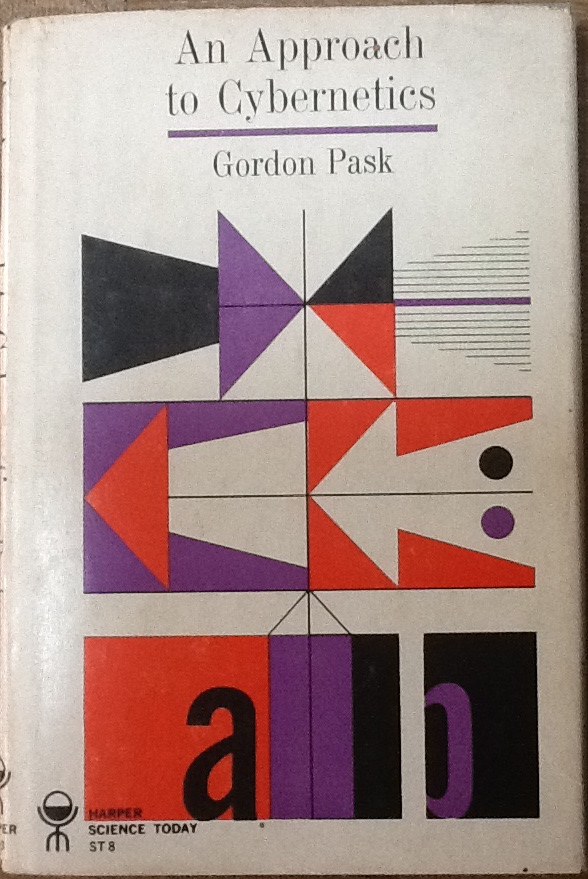Gordon Pask: An Approach to Cybernetics (1961/1968)
Filed under book | Tags: · cybernetics, engineering, environment, machine, technology

“This book is not for the engineer content with hardware, nor for the biologist uneasy outside his specialty; for it depicts that miscegenation of Art and Science which begets inanimate objects that behave like living systems. They regulate themselves and survive: They adapt and they compute: They invent. They co-operate and they compete. Naturally they evolve rapidly.
Pure mathematics, being mere tautology, and pure physics, being mere fact, could not have engendered them; for creatures to live, must sense the useful and the good; and engines to run must have energy available as work: and both, to endure, must regulate themselves. So it is to Thermodynamics and to its brother SUM(p) log p, called Information Theory, that we look for the distinctions between work and energy and between signal and noise.
For like cause we look to reflexology and its brother feedback, christened Multiple Closed Loop Servo Theory, for mechanical explanation of Entelechy in Homeostasis and in appetition. This is that governance, whether in living creatures and their societies or in our lively artifacts, that is now called Cybernetics.
But under that title Norbert Wiener necessarily subsumed the computation that, from afferent signals, forecasts successful conducts in a changing world.
To embody logic in proper hardware explains the laws of thought and consequently stems from psychology. For numbers the digital art is as old as the abacus, but i came alive only when Turing made the next operation of his machine hinge on the value of the operand, whence its ability to compute any computable number.
For Aristotelian logic, the followers of Ramon Llull, including Leibniz, have frequently made machines for three, and sometimes four classifications. The first of these to be lively computes contingent probabilities.
With this ability to make or select proper filters on its inputs, such a device explains the central problem of experimental epistemology. The riddles of stimulus equivalence or of local circuit action in the brain remain only as parochial problems.
This is that expanding world of beings, man-made or begotten, concerning which Ross Ashby asked, ‘How can such systems organize themselves?’ His answer is, in one sense, too general and its embodiment, too special to satisfy him, his friends or his followers.
This book describes their present toil to put his ideas to work so as to come to grips with his question.” (Warren S. McCulloch, Preface)
With a preface by Warren S. McCulloch
Publisher Hutchinson & Co, London, 1961
This edition March 1968
ISBN: 0090868102, 0090868110
128 pages
via pangaro.com
PDF (updated on 2012-7-16)
Comment (0)Leave a Reply

